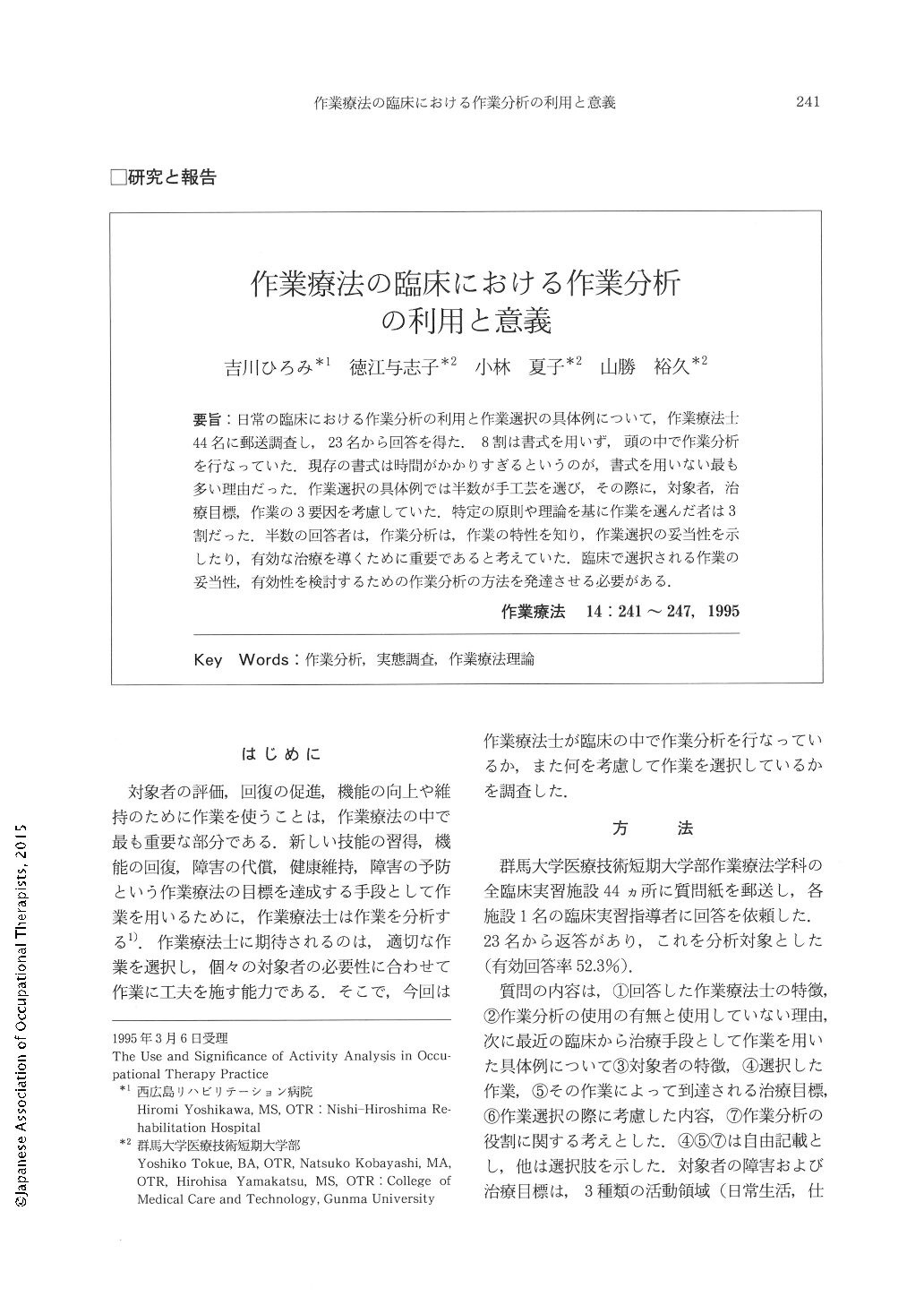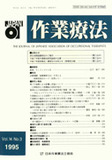Japanese
English
- 販売していません
- Abstract 文献概要
- 1ページ目 Look Inside
- 参考文献 Reference
- サイト内被引用 Cited by
要旨:日常の臨床における作業分析の利用と作業選択の具体例について,作業療法士44名に郵送調査し,23名から回答を得た.8割は書式を用いず,頭の中で作業分析を行なっていた.現存の書式は時間がかかりすぎるというのが,書式を用いない最も多い理由だった.作業選択の具体例では半数が手工芸を選び,その際に,対象者,治療目標,作業の3要因を考慮していた.特定の原則や理論を基に作業を選んだ者は3割だった.半数の回答者は,作業分析は,作業の特性を知り,作業選択の妥当性を示したり,有効な治療を導くために重要であると考えていた.臨床で選択される作業の妥当性,有効性を検討するための作業分析の方法を発達させる必要がある.
The use of activity analysis in daily occupational therapy practice was examined through a mail survey. Twenty-three out of 44 occupational therapists returned their questionnaires. The study showed that 18 therapists (78%) use activity analysis through mental processing; however, one therapist uses a written activity analysis form in daily practice. Half of the subjects indicated that activity analysis is important in occupational therapy, but formal activity analysis is too time-consuming. Half of the subjects selected art and crafts activities in the cases they presented on the questionnaires. The higher considerations in selecting activities were the client's interest, treatment goal, and availability of an activity. Seven subjects (30%) selected the activites based on a particular theoritical principle. The development of practical formal activity analysis forms for examining the validity and effectiveness of activities selectedted in occupational therapy practice is needed.

Copyright © 1995, Japanese Association of Occupational Therapists. All rights reserved.


